1. Early Life
Caesarion's early life was marked by the extraordinary circumstances of his birth and his mother's ambition, which placed him directly in the volatile political arena of the late Roman Republic.
1.1. Birth and Parentage
Ptolemy Caesar was born in Egypt in mid to late 47 BC, with some sources specifying June 23. His mother, Cleopatra VII, asserted that he was the son of the Roman statesman and dictator, Julius Caesar. Despite claims that Caesarion inherited Caesar's looks and mannerisms, Julius Caesar never officially acknowledged him as his son, likely due to the political complications such an acknowledgment would create in Rome.
The legitimacy of Caesarion's parentage became a contentious issue, primarily from a Roman perspective, not to question his suitability for the Egyptian throne but to deny his claim as Caesar's heir under Roman law. One of Caesar's prominent supporters, Gaius Oppius, even authored a pamphlet aiming to disprove Caesar's paternity of Caesarion. Nevertheless, Caesar may have permitted Caesarion to use his name. The controversy intensified when Caesar's adopted son, Octavian, entered into conflict with Cleopatra, as Caesarion's existence challenged Octavian's own claim to be Caesar's sole legitimate successor. Most modern scholars today generally accept that Caesarion was indeed the biological son of Julius Caesar.
1.2. Childhood and Early Co-rule
Caesarion spent two of his infant years, from 46 to 44 BC, in Rome, residing with his mother as guests in Caesar's villa, the Horti Caesaris. During this period, Cleopatra harbored ambitions for her son to eventually succeed his father as the leader of the Roman Republic, in addition to ruling Egypt.
Following Caesar's assassination on March 15, 44 BC, Cleopatra and Caesarion returned to Egypt. On September 2, 44 BC, at the young age of three, Caesarion was formally named co-ruler by his mother. Although he held the title of pharaoh, his authority was nominal, with Cleopatra retaining all actual power. Cleopatra notably likened her relationship with her son to that of the Egyptian goddess Isis and her divine child Horus, reinforcing Caesarion's sacred and royal status within Egyptian tradition.
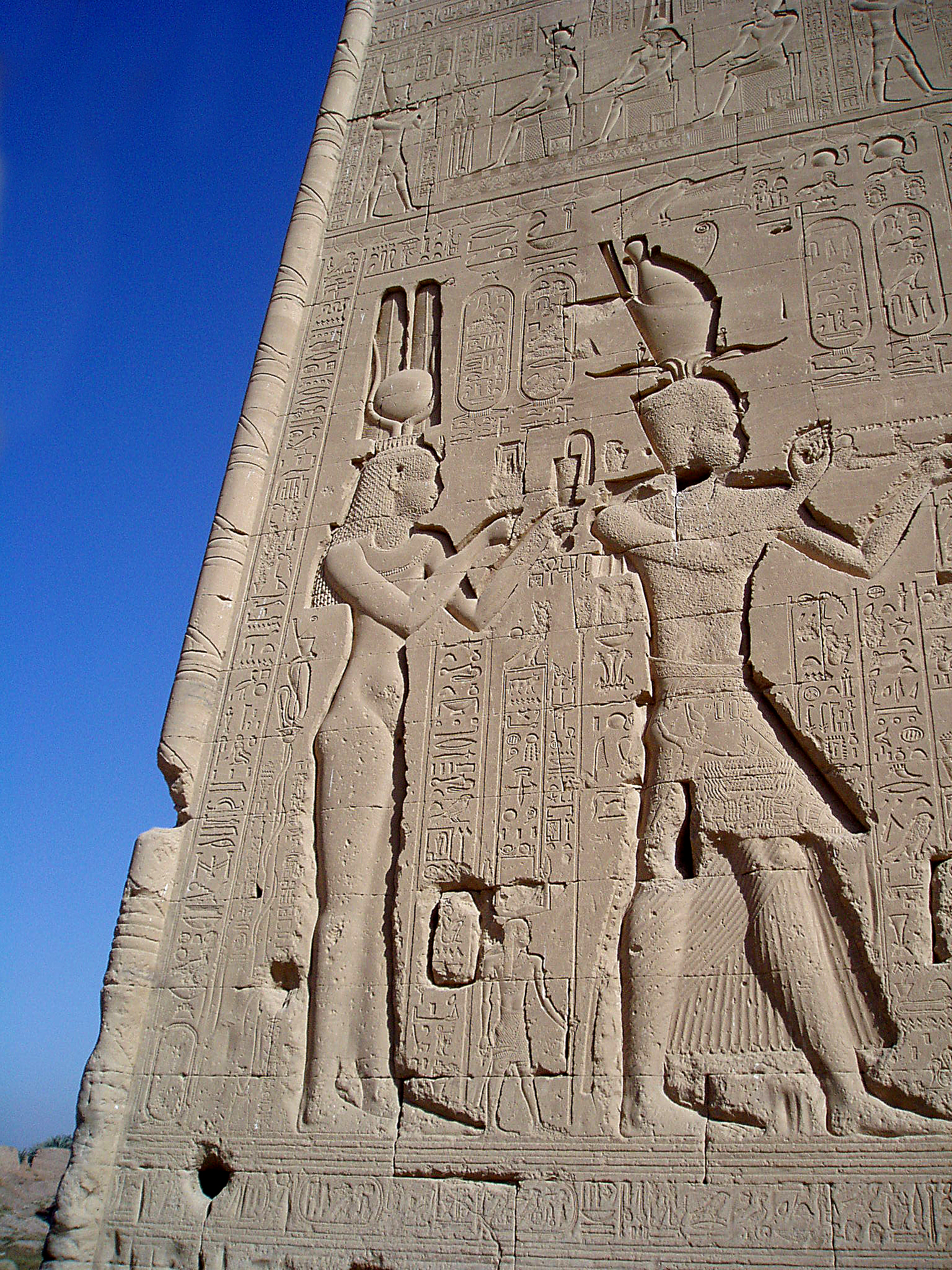
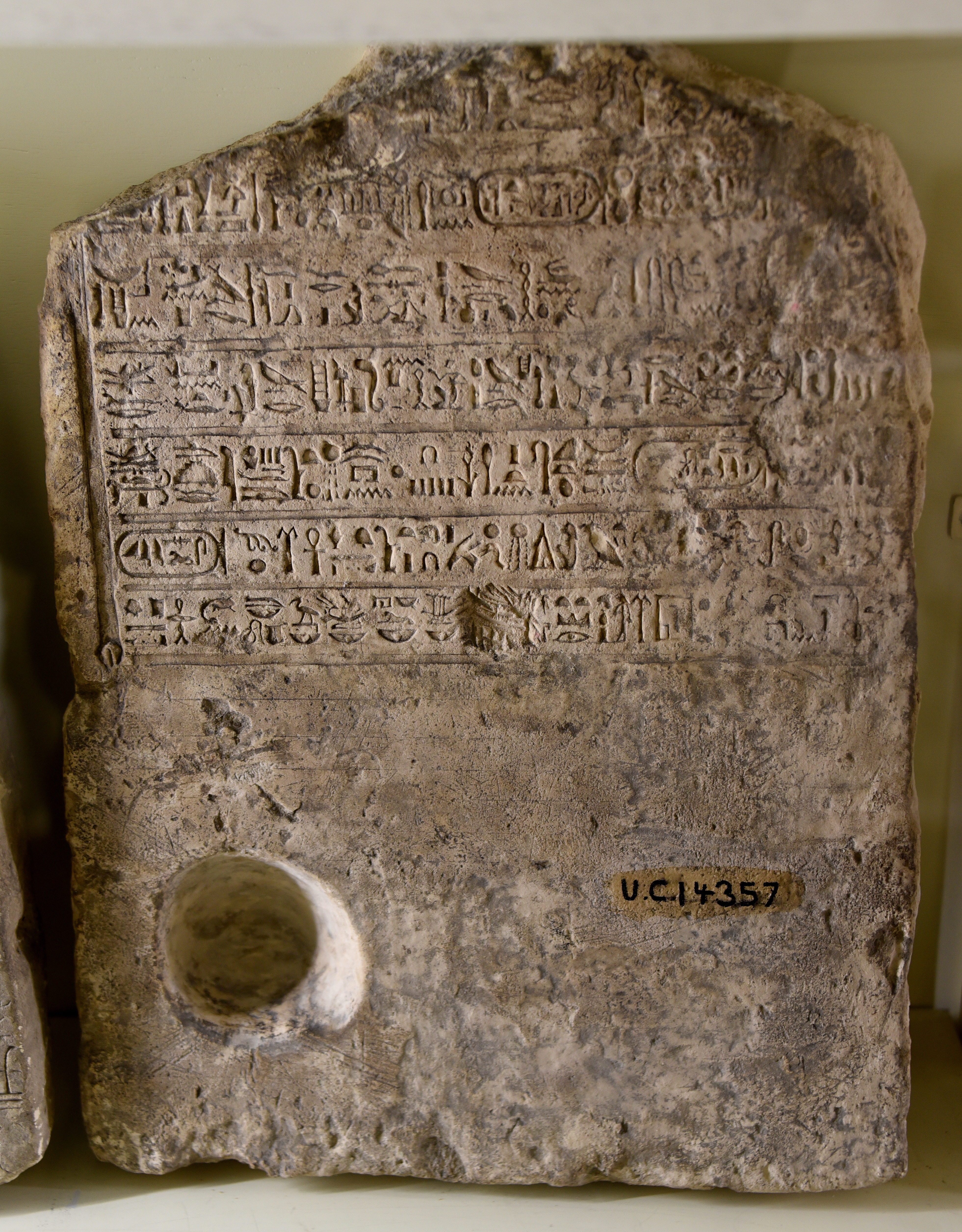
2. Reign and Political Significance
Caesarion's reign, though largely symbolic, held immense political significance, making him a critical figure in the power struggles that defined the late Roman Republic.
2.1. Royal Proclamations and Titles
In 34 BC, during the grand political spectacle known as the Donations of Alexandria, Mark Antony bestowed extensive eastern lands and prestigious titles upon Caesarion and his three half-siblings (children of Cleopatra and Antony: Alexander Helios, Cleopatra Selene II, and Ptolemy Philadelphus). During this ceremony, Caesarion was proclaimed to be a god, a "son of [a] god," and, most notably, "King of Kings." This grandiose title was unprecedented in Roman client-king relationships and was perceived as a direct challenge to the perceived "greatness" and supremacy of the Roman people and their burgeoning empire.
2.2. Position in Roman Power Struggles
The declarations made at the Donations of Alexandria profoundly impacted the delicate balance of power in Rome. Antony's explicit proclamation of Caesarion as Caesar's true son and heir directly threatened Octavian's claim to power, which rested entirely on his status as Julius Caesar's grandnephew and adopted son. This audacious move by Antony was a primary catalyst for the irreparable rupture in his relationship with Octavian. Octavian skillfully leveraged Roman resentment over the Donations of Alexandria, portraying them as an affront to Roman dignity and interests, thereby gaining crucial support for a full-scale war against Antony and Cleopatra. Caesarion, therefore, became a central pawn in the escalating civil conflict that would determine the future of the Roman world.
3. Death
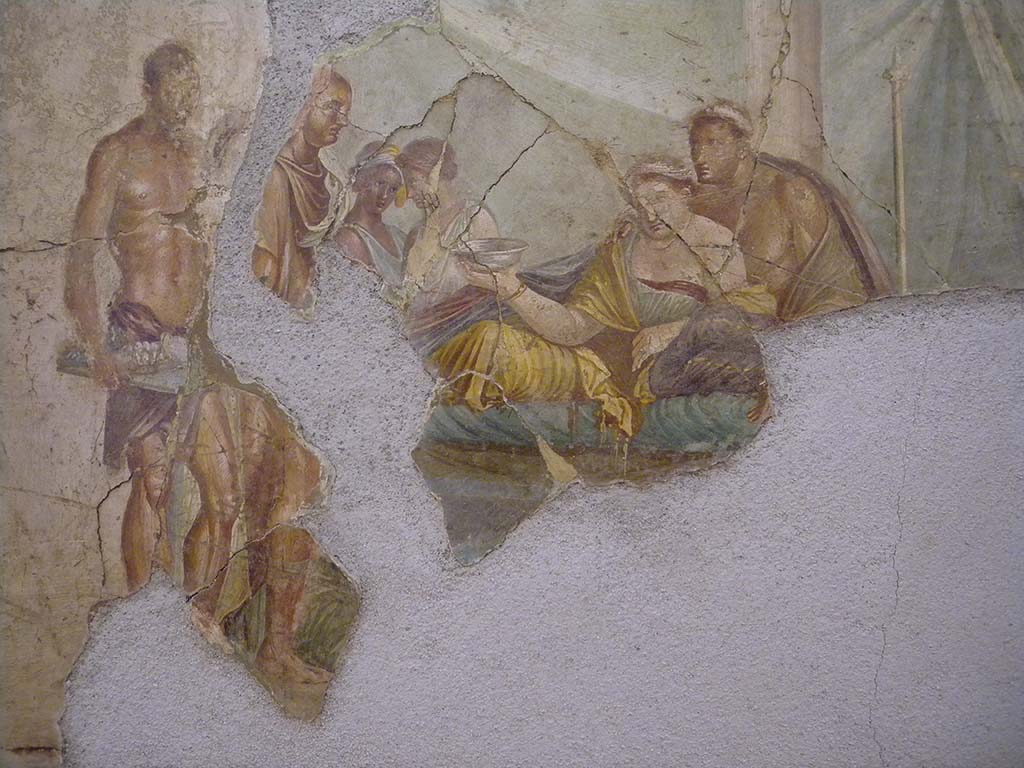
Following the decisive defeat of Mark Antony and Cleopatra at the Battle of Actium in 31 BC, Cleopatra seemingly began preparing Caesarion to assume control as the "sole ruler without his mother." She may have contemplated going into exile, potentially with Antony, who might have hoped for a retirement similar to that of Marcus Aemilius Lepidus.
Caesarion reappears in the historical record in 30 BC, as Octavian's forces advanced on Egypt. Cleopatra dispatched the 17-year-old Caesarion to the Red Sea port of Berenice Troglodytica, likely as a safety measure, possibly with plans for escape to India. The Greek biographer Plutarch notes that Caesarion was indeed sent towards India but was ultimately persuaded to return by his tutor, Rhodon, under the false pretense that Octavian intended to grant him the kingdom of Egypt.
Octavian's forces captured the city of Alexandria on August 1, 30 BC, a date marking the official annexation of Egypt into the Roman Republic. Around this time, Mark Antony and Cleopatra died, traditionally by suicide. Octavian is said to have temporarily considered allowing Caesarion to succeed his mother and rule a diminished Egyptian kingdom. However, influenced by his companion Arius Didymus, who famously quipped, "Too many Caesars is not good" (a pun on a line from Homer's *Iliad*), Octavian ultimately ordered Caesarion's execution in Alexandria in late August, possibly on August 29 or 30, 30 BC. The exact details surrounding Caesarion's death remain scarce. With Caesarion's demise, Octavian secured absolute control of Egypt, and the year 30 BC was subsequently recorded as the first year of the new Roman ruler's reign in the traditional Egyptian chronological system. This act finalized the demise of the Ptolemaic dynasty, effectively ending over three centuries of Hellenistic rule in Egypt.
4. Depictions
Few authentic images of Caesarion have survived the passage of time. A partial statue, believed to depict him, was discovered in the harbor of Alexandria in 1997.
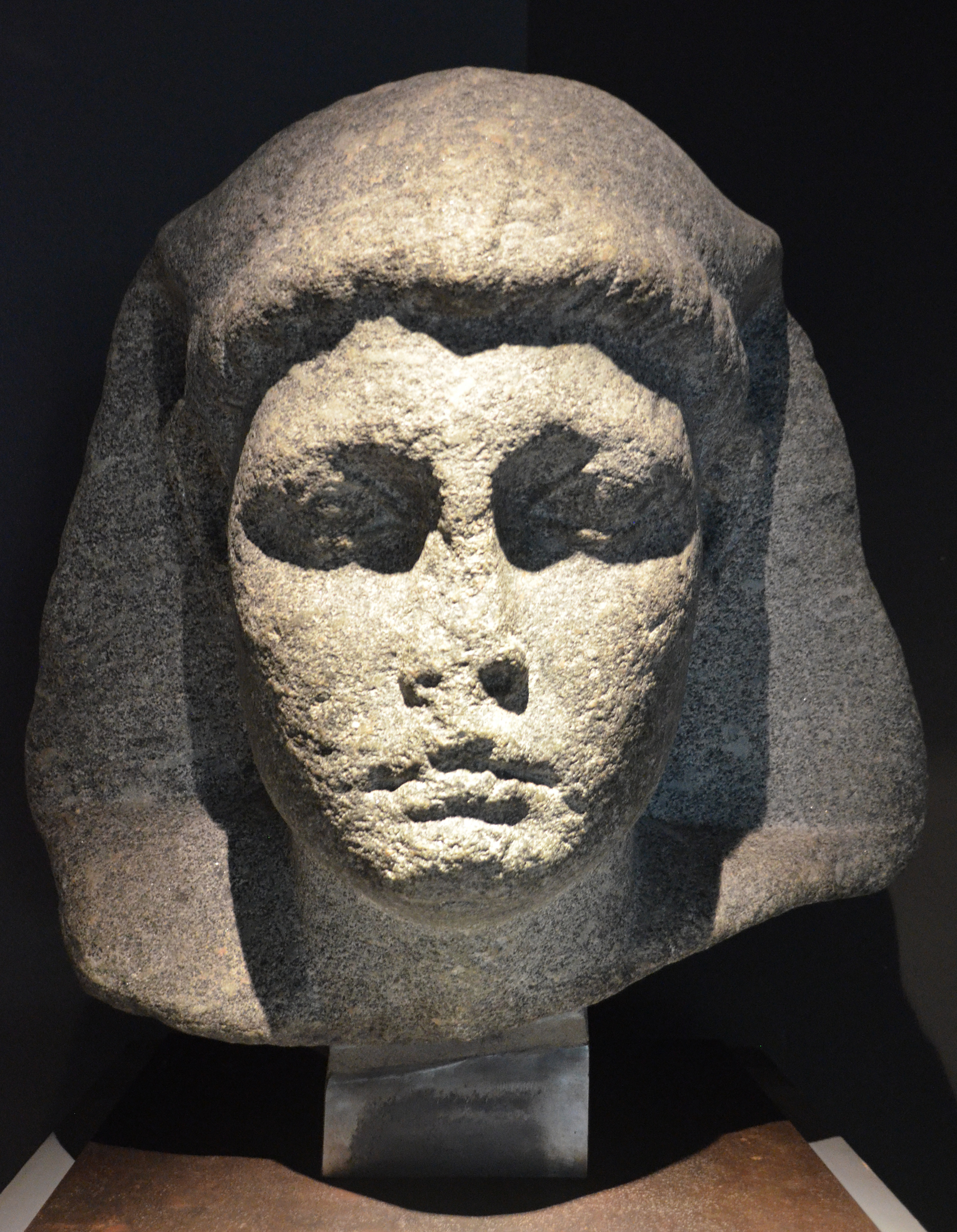
He is also prominently featured in two reliefs, portrayed as an adult pharaoh, alongside his mother Cleopatra VII at the Temple of Hathor in Dendera. His likeness as an infant appears on some bronze coins issued by Cleopatra.
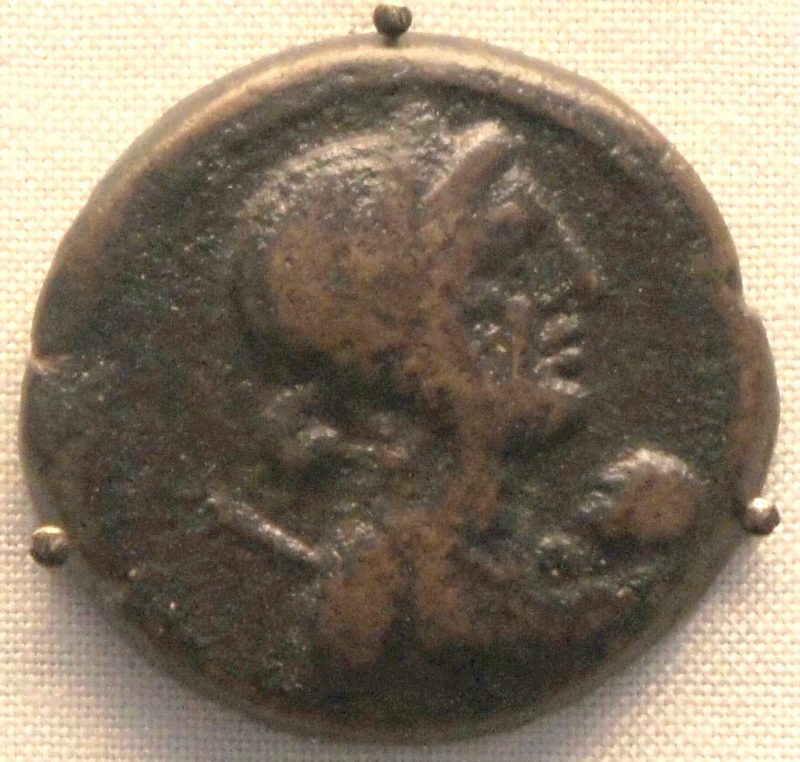
A mid-1st century AD Roman wall painting found in Pompeii, depicting Venus holding a cupid, is widely believed to be a representation of Cleopatra VII as Venus Genetrix, with Caesarion depicted as the cupid. This interpretation is supported by its similarity to a now-lost statue of Cleopatra that Julius Caesar had erected in the Temple of Venus Genetrix in Rome. The room containing this painting was walled off, possibly in immediate reaction to Caesarion's execution, as artistic depictions of him would have become a sensitive issue under Octavian's rule, potentially leading to damnation of his memory.
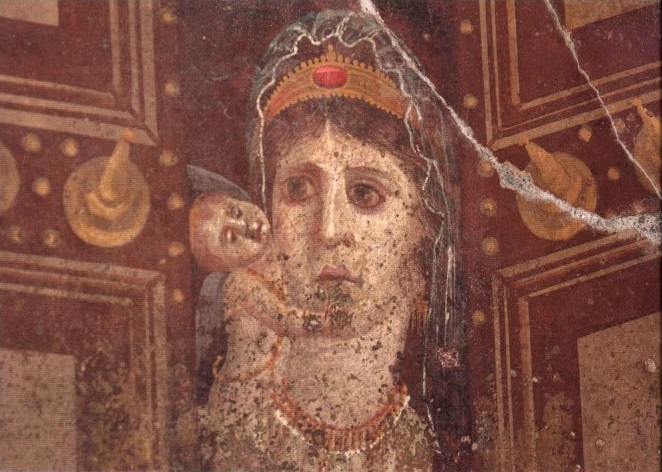
Additionally, at the Temple of Edfu in Upper Egypt, two statues of the falcon god Horus stand behind a smaller depiction of Caesarion.
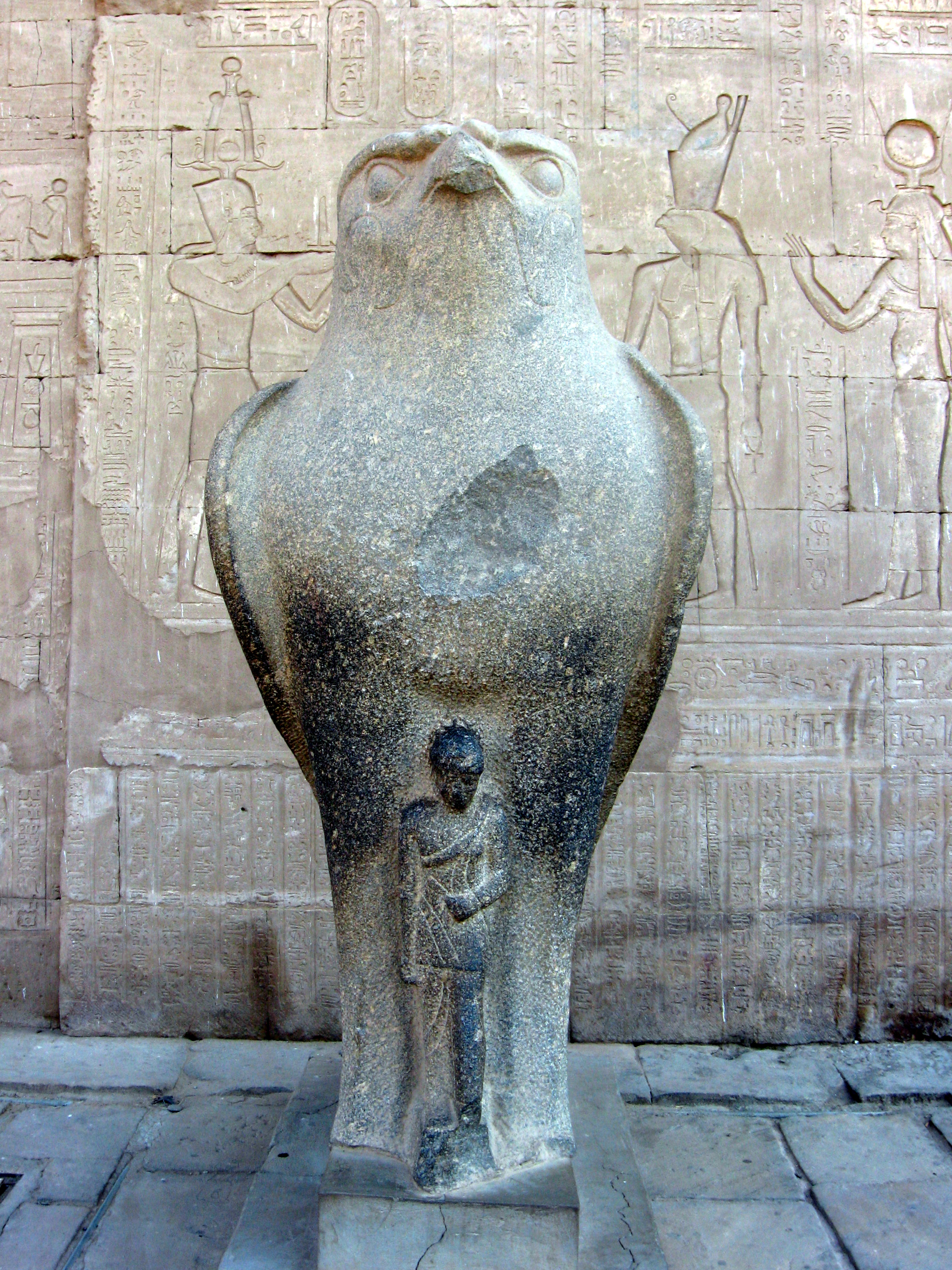
5. Egyptian Royal Names
In addition to his Greek name and nicknames, Caesarion was also accorded a full set of royal names in the ancient Egyptian language, reflecting his status as a pharaoh:
- Iwapanetjer entynehem - "Heir of the god who saves"
- Setepenptah - "Chosen of Ptah"
- Irmaatenre - "Carrying out the rule of Ra" or "Sun of righteousness"
- Sekhemankhamun - "Living image of Amun"
6. Ancestry
Caesarion's lineage connects the ancient Ptolemaic dynasty of Egypt with prominent Roman noble families, most notably the gens Julia through his reputed father, Julius Caesar.
| 1. Caesarion | 2. Julius Caesar | 3. Cleopatra VII | ||||||||
|---|---|---|---|---|---|---|---|---|---|---|
| 4. Gaius Julius Caesar the Elder | 5. Aurelia Cotta | 6. Ptolemy XII Auletes | 7. Cleopatra V of Egypt | |||||||
| 8. Gaius Julius Caesar II | 9. Marcia | 10. Lucius Aurelius Cotta | 11. Rutilia | 12. Ptolemy IX Lathyros | 13. Cleopatra IV of Egypt | 14. Ptolemy X Alexander I | 15. Berenice III of Egypt | |||
| 16. Gaius Julius Caesar I | 18. Quintus Marcius Rex | 20. Lucius Aurelius Cotta the Elder | 24. Ptolemy VIII Physcon | 25. Cleopatra III of Egypt | 26. Ptolemy VIII Physcon | 27. Cleopatra III of Egypt | 28. Ptolemy VIII Physcon | 29. Cleopatra III of Egypt | 30. Ptolemy IX Lathyros | 31. Cleopatra Selene I |
7. Legacy
Caesarion's brief life holds profound historical significance, primarily as a symbol of the transition from the Hellenistic era to Roman dominance in the Eastern Mediterranean. As the last pharaoh of the Ptolemaic dynasty, his death marked the definitive end of an independent Egyptian monarchy that had endured for centuries since the time of Alexander the Great.
His existence was a critical factor in the power struggle between Mark Antony and Octavian. Caesarion, being the potential biological son of Julius Caesar, represented a legitimate challenge to Octavian's carefully constructed claim to Caesar's legacy and, by extension, to supreme power in Rome. Antony's strategic promotion of Caesarion as Caesar's true heir was a calculated political maneuver that ultimately backfired, solidifying Octavian's resolve to eliminate all rivals.
Caesarion's execution, a ruthless act of political pragmatism by Octavian, effectively extinguished the last vestiges of the Ptolemaic line and removed any living claimant who could undermine Octavian's sole authority. His demise thus paved the way for Egypt's full annexation as a Roman province, signaling the final absorption of a major Hellenistic kingdom into the burgeoning Roman Empire. Caesarion's story is a stark reminder of the unforgiving nature of ancient power politics and the tragic fate of those caught in the crosscurrents of imperial ambition.